Photographs by Jedrzej Nowicki
In a town called Staryi Saltiv, in northeastern Ukraine, many buildings lie in ruins after years of war, but only one has been demolished twice: the district school. Russian missiles leveled it in early 2022. The town gradually raised the money not just to reconstruct it but to enlarge and improve it, adding new facilities for disabled children. Then, just days after the work was completed in early May, the Russians sent five Shahed drones into it, leaving it a burned-out ruin.
“We don’t know why,” Iryna Glazunova, the town’s director of education and culture, told me. “I think the overall point is to destroy Ukraine.”
Now an enormous, colorful banner draped over the wreckage reads WE WILL CONTINUE ANYWAY.
They will continue in a reinforced-concrete bunker three stories underground, where Staryi Saltiv is digging its new school out of the earth. Similar schools are under construction across eastern Ukraine. Kharkiv, the largest city in the northeast, has seven major subterranean schools, and more are being built; the resources being poured into this effort testify to the grim expectation that such facilities will be in use for many years.
Visiting them is an eerie experience: Aboveground, schoolyards and jungle gyms are empty and silent. Only when you descend two or three stories into the bunker do you hear the familiar shrieks and laughter of children.
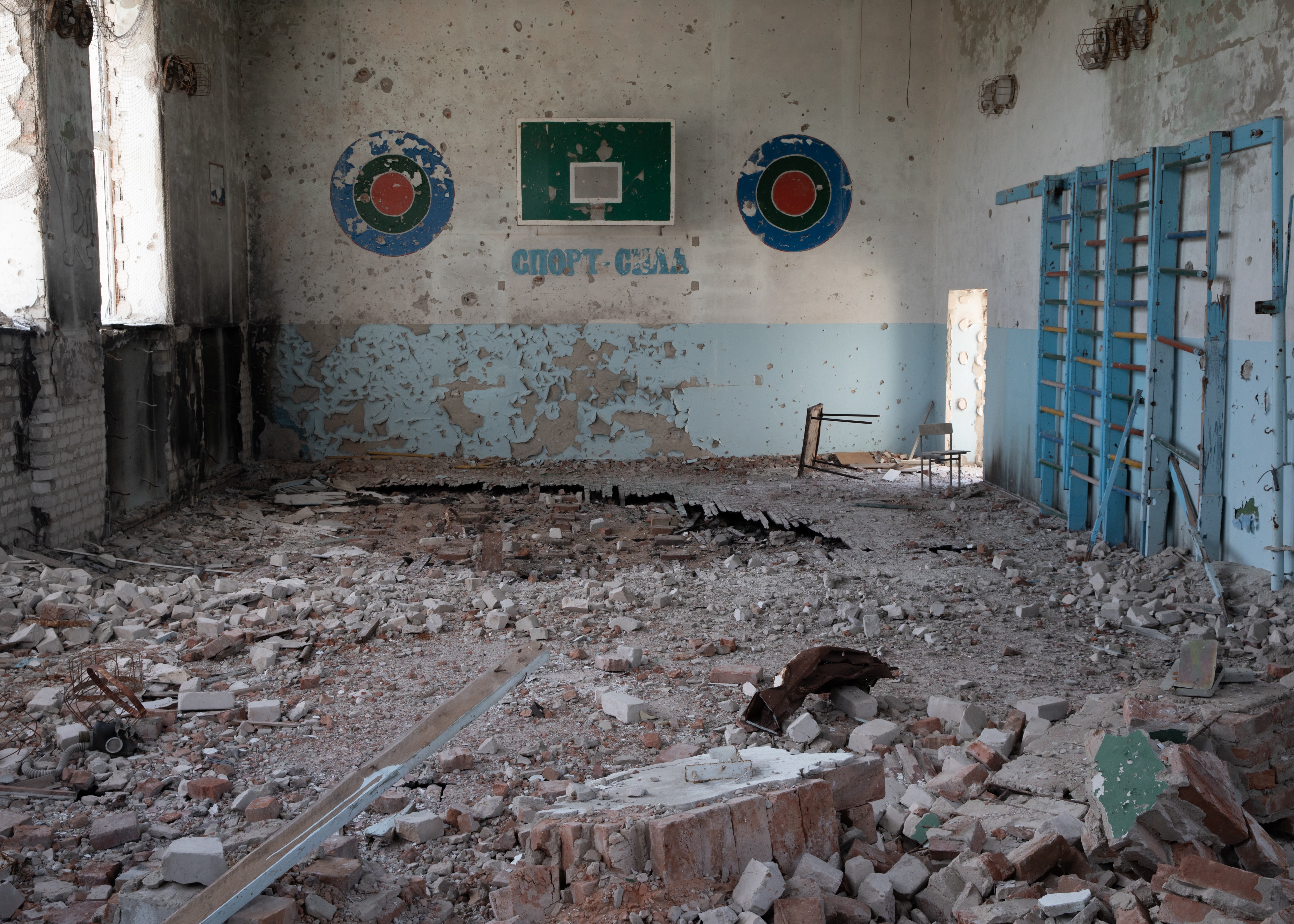
Russian drones have made a clear sky into a source of terror for Ukrainian young people. Most have taken instruction only by Zoom since the full-scale Russian invasion began, in 2022. They study in apartments they share with their parents, with frequent interruptions, such as when the power goes out or when the air-raid sirens send them fleeing to shelters. Many are so isolated and anxious that they are unable to imagine a future.
The plight of Ukraine’s young people is a direct consequence of Russia’s effort to eradicate their national identity. In a little less than four years, Russia has damaged or destroyed some 3,500 schools in an apparent campaign to demoralize the population and pave the way for its Russification. The onslaught has also reduced churches and town halls across northeastern Ukraine to rubble, and with them, much of the physical and mental infrastructure of life for the country’s youth.
When I visited the Kharkiv region this summer, I heard from administrators, teachers, and military officers in town after town that the isolation of Ukrainian children presents an existential threat to the country’s future. To confront it, community members are building new institutions underground and improvising new forms of social life.
Young people now spend much of their life in a subterranean world of schools, recreation centers, shelters, even malls. Some adults told me that the effort to create such spaces is as important as anything happening on the war’s front lines. When Iryna Markevych, a psychologist in Kharkiv, began fundraising for a Mobile School of Resilience in 2022, “people said, ‘We only need money for the army,’” she told me. “We said, ‘If the children are all unhappy, what are you fighting for?’”
Three years later, the urgency of the task is now widely acknowledged. Ukraine’s adolescents will soon grow up and be needed to defend their country’s fragile civic unity. They may also have to fight in a war that could last for many more years; if they’re lucky, they will then shoulder the even greater burden of rebuilding all that Russia has destroyed.
“The light temperature is adjusted to re-create the quality of natural light,” Yulia Bashkirova, the city’s district-education director, told me as we descended an immaculate stairwell to visit School 105 in Kharkiv. “The technical requirements were developed by the city hall.”
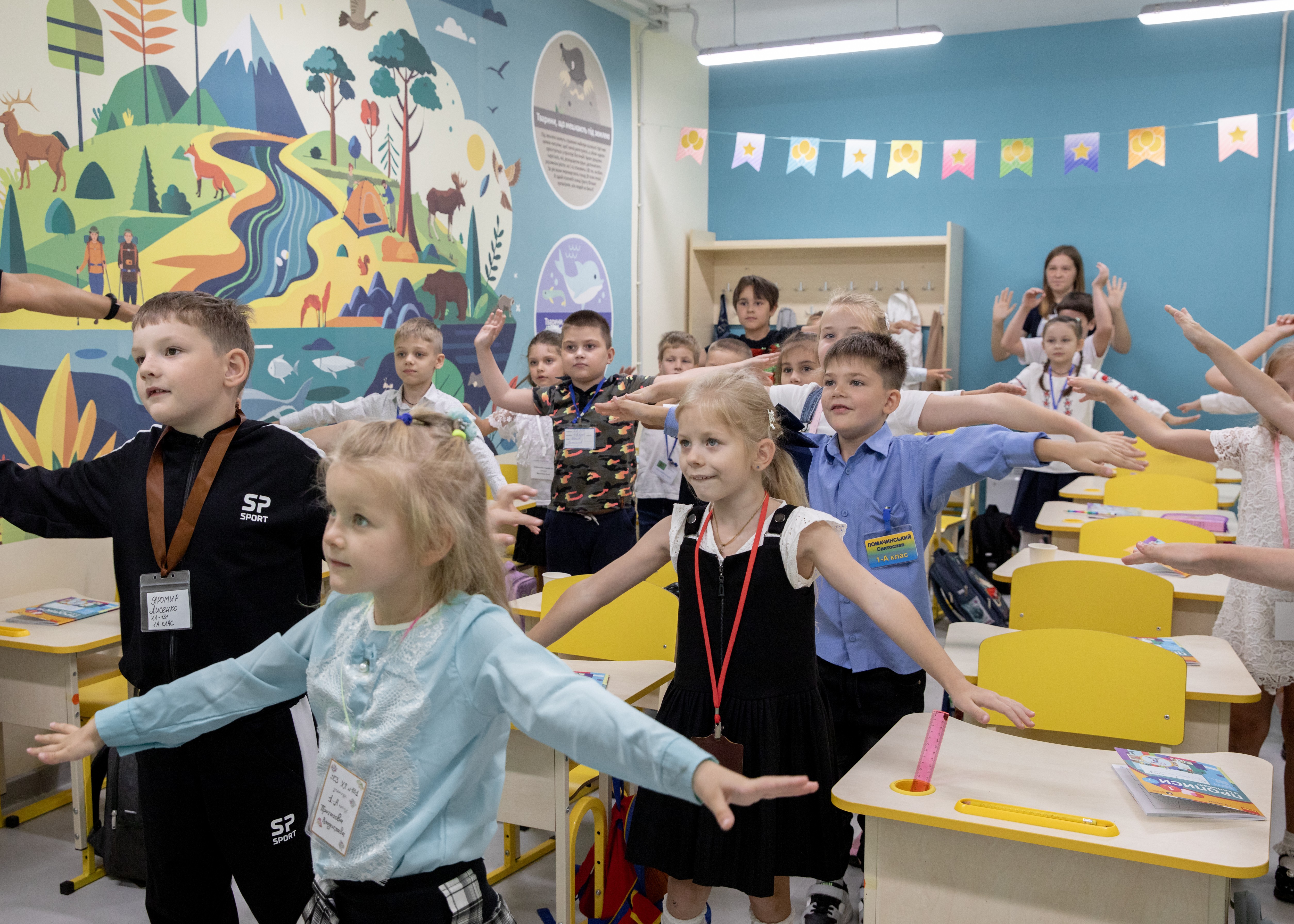
She opened a heavy door to the school’s main corridor, and suddenly we were surrounded by flocks of schoolchildren. It was like being inside a submarine. Every square inch of space was used for something: bookshelves, projectors, wall calendars. The kids eat lunch (provided by the school) at their desks because there is no room for a cafeteria. Colorful murals substitute for windows. Children who would once have been spread out among nine different schools now attend School 105 in shifts because so many families are desperate for an offline-school experience. Perhaps for that reason, everyone I saw seemed gleeful.
“There have been educational losses” during the years of online schooling, the school’s director, Nataliya Teplova, told me. “We are trying to make up for that—additional classes during weekends, that kind of thing.”
The learning deficits are hard to measure, because testing protocols have changed in the past three years. In western Ukraine, many schools went back to in-person classes years ago. But in the eastern areas close to the front, movement of any kind is dangerous, and electricity and phone service are often disrupted. Educators spoke about 10-year-olds who have not yet learned to read. Even underground facilities are usually impossible to build in these places, because the construction sites get targeted.
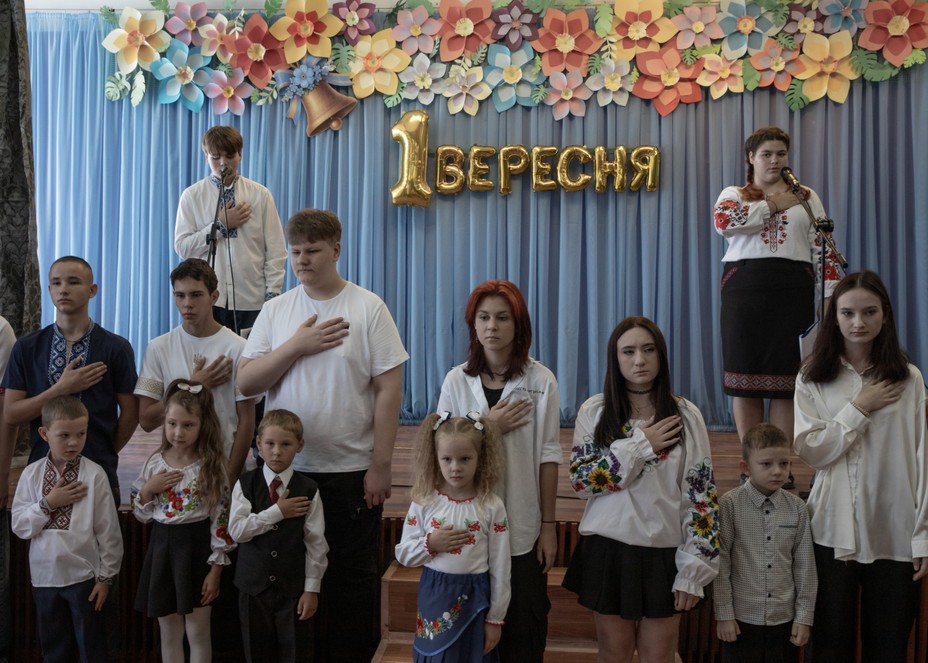
The war’s emotional effects are just as real but even harder to measure. “Some children have no faith in the future,” Teplova said. “They are more irritable and have more trouble dealing with their emotions. It will take a long time to deal with that.” When Staryi Saltiv opened its first underground learning center, “kids would come in and just touch another child,” said Glazunova, the town’s education-and-culture director, miming a wide-eyed child reaching her hands out hungrily for contact. “They didn’t have the experience of being close to others.”
Every adolescent I spoke with in Ukraine talked about the misery of isolation. “I don’t remember my life without this war,” Solomiia Taranenko, a 19-year-old university student in Kyiv, told me. As a child, she said, “you’d be watching cartoons, then you change the channel and you see a city on fire” in eastern Ukraine, where Russia began a proxy war in 2014. After the 2022 invasion, she said, she spent months confined at home; later, she began bringing potassium-iodide pills everywhere, in case of a nuclear attack. “It became really normal: class, air alert, go to the bomb shelter, back to class.”
In a small farming town called Savyntsi, a group of local officials described to me a recent study showing elevated cancer rates among young people in the area. Sickness was just one of many ways, they said, in which the cumulative stress of war had permeated children’s lives: anxiety, depression, reduced academic achievement. Nothing, they told me, was more important than restoring a sense of normalcy to the younger generation. In early 2022, the town’s brief Russian occupation ended, leaving behind dozens of bombed-out buildings. The officials decided to delay the town’s aboveground reconstruction and instead put all of their efforts into a regional underground school that would accommodate 450 students from 18 nearby hamlets.
“This school is our No. 1 priority,” Oksana Suprun, the mayor, told me. In the meantime, the school is sending teachers to give lessons in smaller underground spaces in the hamlets.
Towns like Savyntsi are getting help from a loose movement of nonprofits and zealous volunteers such as Markevych, the psychologist who founded the Mobile School of Resilience three years ago. Markevych works with about 20 colleagues and spends much of her time driving around eastern Ukraine in a van, organizing tutoring and puppet shows and handing out books. In the formerly occupied areas, she told me, the Russians removed all of the Ukrainian books from local libraries.
“Everyone needed help in the gray zone” near the front line, Markevych said about her work, which began as a one-woman volunteer effort in 2017. “Some were accused of being traitors because they stayed” during the Russian occupation. “Some kids born after 2014 never knew peace.” When she and her colleagues first began organizing summer camps in formerly occupied areas, Markevych told me, “some parents resisted because the Russians ‘invited’ kids on trips and they never returned.” (Russia has abducted almost 19,000 children, according to Ukrainian authorities, and some estimates run much higher.)
Markevych briefly teared up as she described the first summer after the Russian invasion, when she helped organize a summer camp for kids from formerly occupied towns. Many were traumatized, and when they saw fireworks, “they hid inside and cried,” she said. “But the camp was important because they regained contact with friends. That allowed them to begin planning their future.”
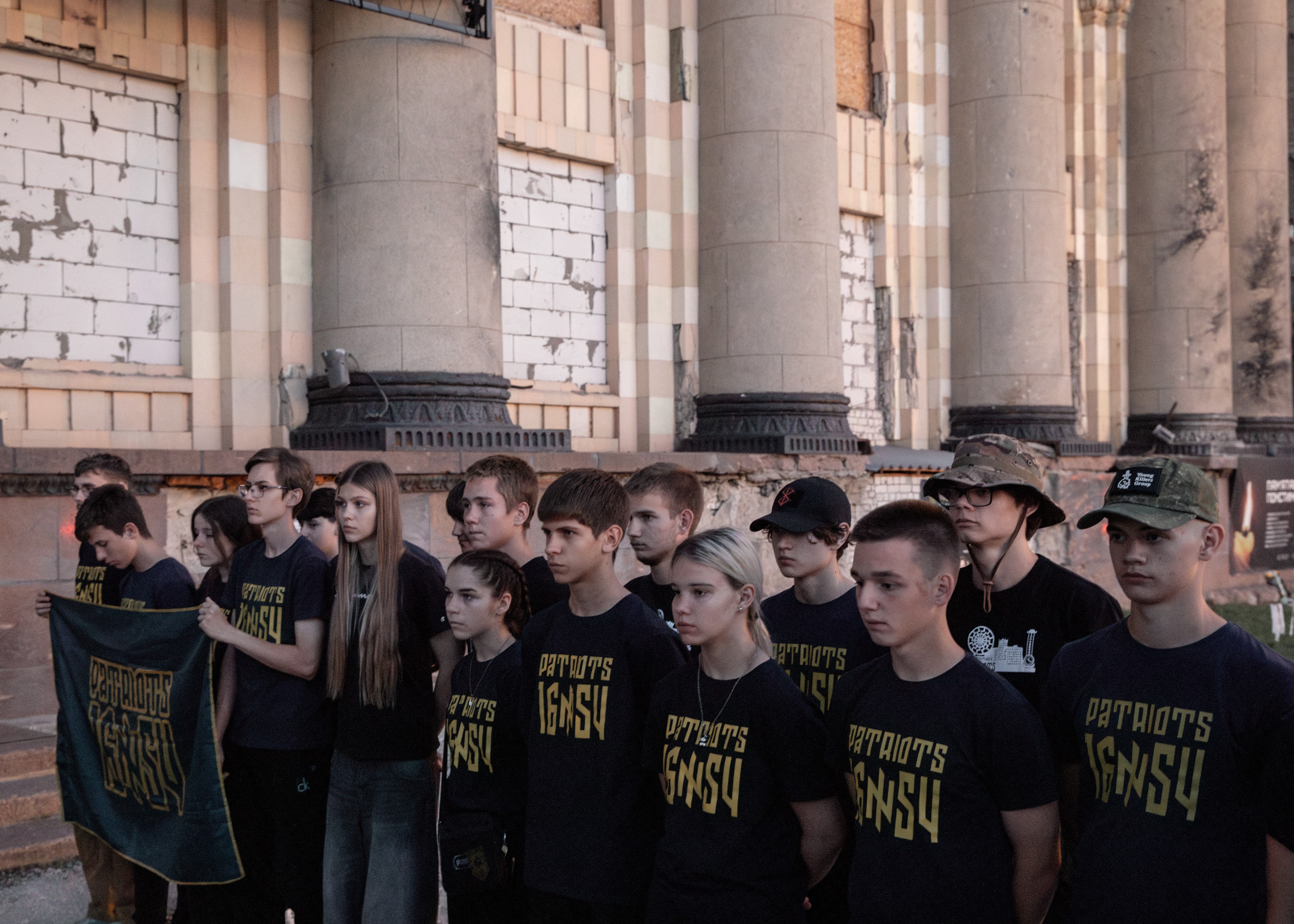
Ukrainian educators and child advocates told me that getting children into real classrooms was only one part of their project. Another was to bolster their sense of Ukrainian identity. I attended an opening-day school ceremony in Savyntsi in early September during which every speaker—the town mayor, teachers, valedictorians—emphasized the importance of teaching Ukrainian language, history, and culture. After the speeches came Ukrainian songs, poems, tributes to soldiers, and, of course, the national anthem.
One of the groups that has done the most cultural-preservation work is Plast, the main Ukrainian Scouting organization, which has expanded its efforts to serve Ukrainian children since the 2022 invasion. Plast was founded in 1911 and banned by both the Nazis and the Soviet authorities. It has taken on a new significance in the past three years as a defender of Ukrainian traditions against the threat of Russification.
Plast has tried to downplay its aggressively nationalist past. But Yaroslav Yurchyshyn, a member of the Ukrainian Parliament and a former scout, told me, “We exchange instructors and knowledge with the Khartia brigade,” a large military unit based in Kharkiv. In a country where 85 percent of people identify as Christian, Plast has an unmistakable, though ecumenical, religious orientation: Every Christmas, Plast scouts make their way to the front line with a “peace flame” that has traveled all the way from Bethlehem via an Austrian cathedral. The scouts tell the soldiers, “We give this to you,” as they pass on the flame, Yurchyshyn said. “You can rely on us. You have a place to return to. You will return to a better society.”
Some youth groups work even more closely with the military. One evening in Kharkiv, I happened upon a memorial service for fallen soldiers. Dozens of adolescents stood at attention in neat rows. They all wore navy-blue shirts bearing the words Patriots 1654, the date of Kharkiv’s founding and the name of a youth wing created by Kraken, a volunteer military brigade based in the city that has a reputation for recruiting bouncers and soccer ultras. One of the kids, an athletic-looking teenager named Ladislav, told me that 1654 is organized into platoons that train with Kraken commanders. Many of them go on to fight in the infantry. A number of other Ukrainian brigades have created their own youth wings.
These efforts may be essential to Ukraine’s ability to maintain the pipeline of new soldiers that it needs for the war effort. Everyone is keenly aware that Ukraine is at a demographic disadvantage vis-à-vis Russia, which continues to hurl infantry soldiers into the war with little regard for their lives. Many Ukrainians also know that just across the front line, Russia is engaged in a much more extreme form of youth indoctrination.
In the occupied areas of Ukraine, Russian authorities have been remaking the schools since 2014, eliminating classes in Ukrainian language and culture and implementing military training alongside a rigid Russian-nationalist curriculum. These classes start in the first grade.
Tetiana Lychko, a documentarian at Almenda, a Kyiv-based think tank that has reported on Russia’s activities in the occupied areas, told me that the classes are compulsory, and that if students do not attend, their parents are called in. Soldiers and priests visit the schools to talk to the youngest children about the importance of the “special military operation.” In a class called “Security and Defense of the Motherland,” introduced last year, seventh- and eighth-grade students learn to operate assault rifles and first-person-view drones. Some specialized “cadet schools” start the training in preschool, where 4-year-olds are taught the names of weapons and how to make camouflage nets for the front line. Outside school, authorities organize even more advanced military-training regimes, such as Zarnitsa 2.0, an open-air war game with origins in the Soviet era.
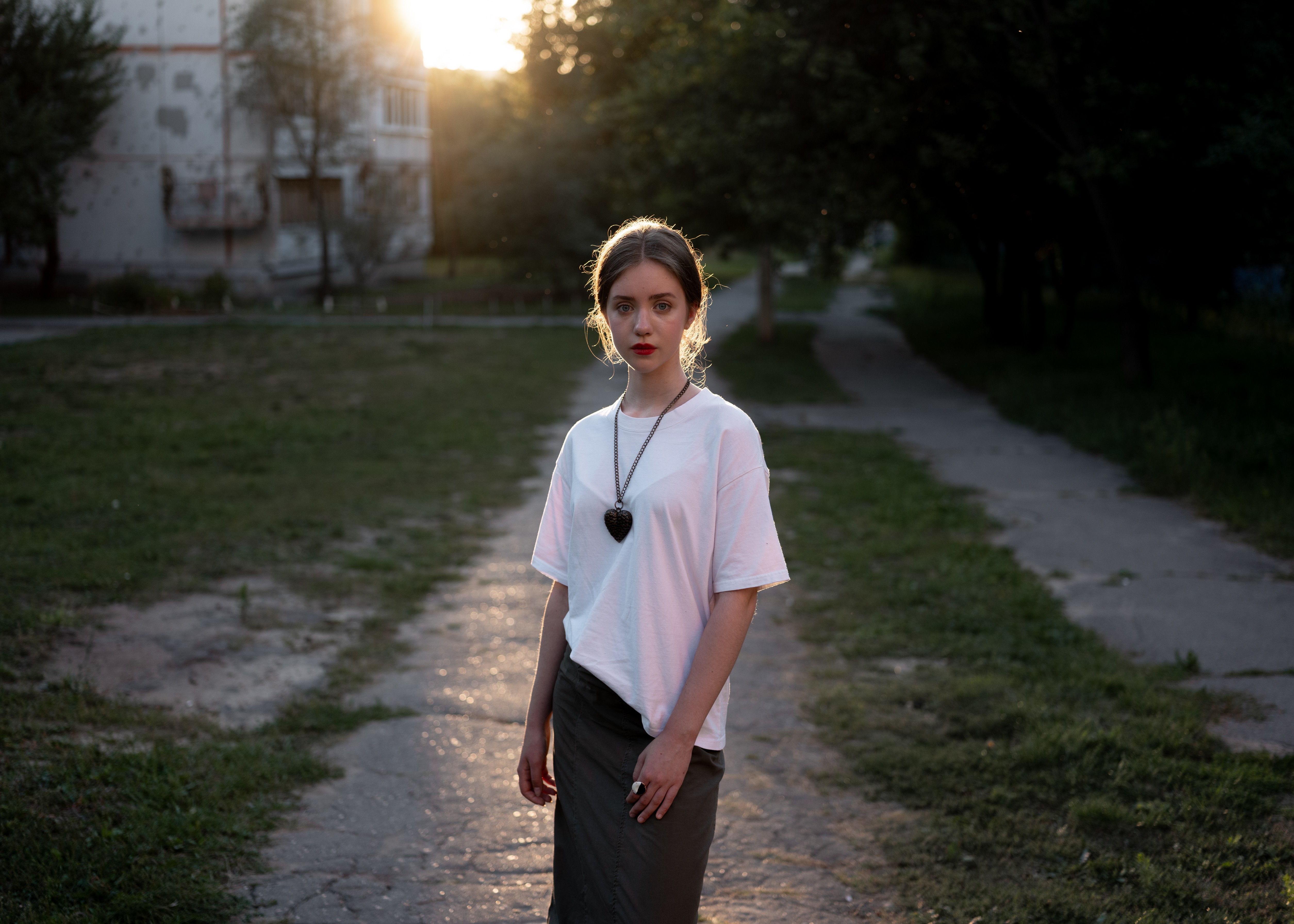
In spite of Russia’s efforts, Ukrainian children regularly escape from the occupied areas, many with the help of their parents. I met one of them in Kyiv, an 18-year-old woman from a town in the Donetsk region whom I’ll call Mariya; she asked that I not use her real name, because she still has family in the occupied zone. She told me that before she escaped last year, “I didn’t really understand I lived in Ukraine—they said in school it was the republic of Donetsk.” Her parents were opposed to the Russian occupation but too frightened to talk about it. After Russian-backed forces seized Donetsk in 2014, Mariya told me, people loyal to Moscow “pointed to those who were pro-Ukrainian and they were taken away. So most stayed quiet. My family too.”
Mariya was 7 when the occupation began, and the changes started immediately. “I had the impression that everything went back to the ’90s; there was no investment, and things decayed,” she said. “Our school was like what Grandma described.”
Credit cards disappeared, as did mobile internet access, and public transport became scarce and unpredictable. Year by year, the propaganda at her school grew more aggressive and all-encompassing, and after Ukrainian classes were abolished, Mariya’s ability to speak the language faded. Eventually, she persuaded her parents to let her leave, and her mother accompanied her on a risky trip through Russia into the Kyiv-controlled part of Ukraine. Even now, her parents (who stayed to take care of a grandparent) tell anyone who asks that she is studying in Russia.
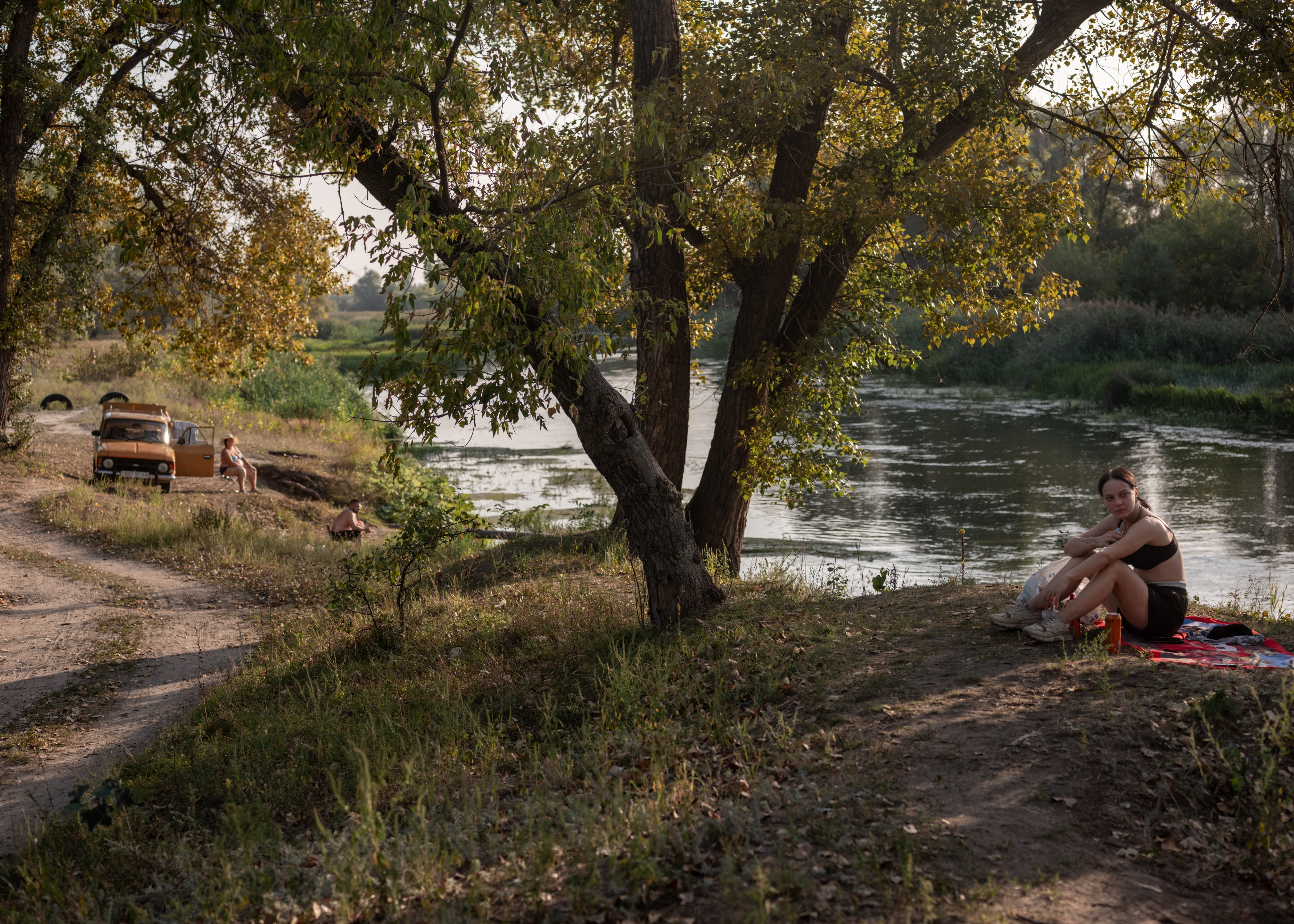
Hundreds of other children have made the same journey. I spoke with Olena Rozvadoska, the co-founder of Voices of Children, a Kyiv-based nonprofit that provides psychological support to children, including those who come from the occupied areas. “These kids are promised 1 million rubles if they stay” in the Russian-controlled areas, Rozvadoska told me. “It’s nonsense. They say: ‘You will have nothing in Ukraine. It’s a fake country. You will be killed.’” The children tend to be euphoric after they first arrive in Ukrainian-controlled territory, she said, but many succumb to depression afterward, especially if they have left family in the east. That is when they need help.
Behind all of the concern about the mental health of Ukrainian children lurks a bigger question regarding the generations too young to have taken part in the unifying 2014 revolt against Russia. The Revolution of Dignity brought thousands of young Ukrainians into the center of Kyiv and ultimately deposed the Russian-backed President Viktor Yanukovych; the experience was formative for Ukrainian Millennials, who cast their lot with a democratic West against what many saw as a rapacious and autocratic neighbor. It was also the immediate precursor to the 2014 Russian annexation of Crimea and incursion into eastern Ukraine.
Today’s young people have lived under martial law for three and a half years, with no near prospect of participating in meaningful elections; their political and social isolation has left many Ukrainians wondering whether they will inherit their elders’ dedication to democracy. But Anton Grushetskyi, a Kyiv-based pollster, told me that he saw some encouraging signs—for instance, that 60 percent of young Ukrainians believe that a successful life is possible in their country, despite what looks to most of them like a permanent state of war.
Many in this young cohort may share the idealism that drew their predecessors to the barricades, even if they have not had much chance to show it. I met several adolescents who said they took seriously the idea that their generation could help provide a moral example to the world. One was a 19-year-old university student from Kharkiv named Anna Kovalenko, who recently organized a series of musical and artistic gatherings called Imagination Space that drew hundreds of participants. She grew up in Saltivka, an enclave in northern Kharkiv that was hit very hard during the first month of the 2022 Russian invasion. Her mother had wanted to get her out of Ukraine at the time—the family had offers of help and money from abroad—but Kovalenko told me that she’d refused to leave her father and grandparents. She hopes to become an architect and help rebuild her country after the war ends.
“Every time people could be helped, I’m overexcited; I barely explode,” she said over the din of an air-raid siren in a Kharkiv cafe. “It’s amazing that I can be helpful in this place. That’s why I’m still here.”
In July, thousands of young people participated in anti-corruption protests across the country. The rallies succeeded in stopping the passage of a bill that would have reduced the independence of two of Ukraine’s anti-corruption bodies. Yana Sliemzina, a 29-year-old journalist who helped organize one of the street protests in Kharkiv, told me that the victory was a political rite of passage for her and many others, partly because corruption has been something of a taboo subject in recent years, thanks to its prominent role in Russian propaganda against Ukraine. Others who took part told me they were happy for any chance to assert their belief in democracy after years of feeling that their lives were permanently on hold, their horizons shrunken by a constant, anxious search for social-media tips about where the next drone would strike.
In a war that has come to seem endless, many young people told me that they prefer not to think about the future at all. Perhaps that is because they know the war’s end will bring a whole new set of challenges and a different kind of heroism. They will have to restore a shattered, traumatized country full of single mothers, maimed veterans, and homeless and displaced people. The outside world may be much less willing to help them than it is today.
“It’s very hard, the weight of it all,” Katya Markevych, a 15-year-old in Kharkiv, told me when I asked her to envision life after the war. “We feel like we will have to rebuild this country literally and metaphorically. It’s a lot of responsibility.”
The post Ukraine’s Underground Generation appeared first on The Atlantic.




